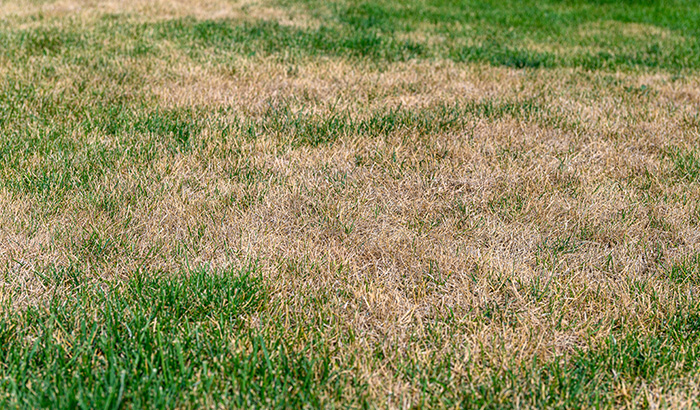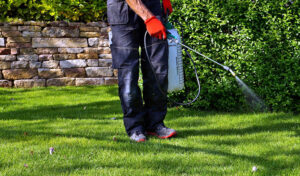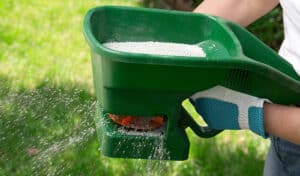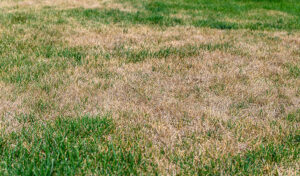A lush, green lawn is the pride of many homeowners but can be a battle against nature’s less welcome elements — lawn diseases. From the unsightly patches of red thread to the perplexing circles of fairy rings, lawn diseases turn your backyard paradise into a gardener’s challenge.
In this comprehensive guide, we delve into some of the most common lawn diseases that plague lawns. We’ll help you identify these ailments and provide expert advice on how to treat and prevent them. With the right knowledge and a bit of care, you’ll be able to keep your lawn looking its best and defend it against these common turf troubles.
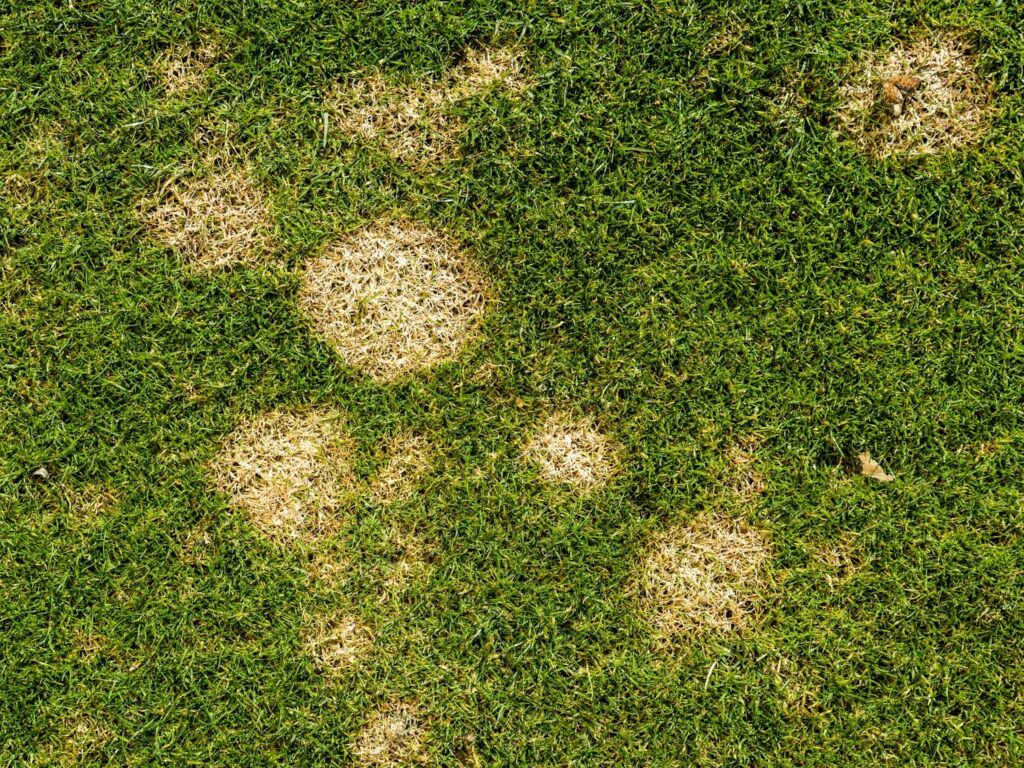
7 common lawn diseases
Brown patch
Brown patch is a prevalent, potentially severe fungal lawn disease, especially in warm, humid climates.
This disease manifests as circular patches of brown, dying grass ranging from a few inches to several feet in diameter. These patches often have a distinctive appearance, with the borders sometimes appearing darker and a “smoke ring” effect — a narrow, darkened ring at the edge of the patch — most visible in the mornings.
The grass might not be entirely dead within these patches but will likely appear sunken and flattened.
Treating brown patch effectively often requires a combination of fungicide application and cultural controls. For severe outbreaks, use fungicides containing active ingredients like azoxystrobin, pyraclostrobin, or fluoxastrobin, following the manufacturer’s guidelines on application rates and frequency.
However, cultural practices are crucial in managing and preventing brown patches. Proper watering techniques are vital; water the lawn deeply yet infrequently, ideally in the early morning hours. This allows the grass to dry during the day, reducing the moisture that the fungus thrives on.
Avoid evening watering, as it leaves the grass damp overnight, creating an ideal environment for the fungus to grow. Regular lawn maintenance, including proper mowing and ensuring good air circulation around the grass, also helps prevent brown patches.
Dollar spot
Dollar spot is characterized by small, circular patches of tan or straw-colored grass about the size of a silver dollar. This disease is most noticeable from late spring through fall and is especially prevalent on lawns with low nitrogen levels.
The patches of dollar spot initially appear small but often merge to form larger areas of infected turf. The grass blades in these patches often have distinctive hourglass-shaped lesions that are bleached or straw-colored. While dollar spot doesn’t usually kill the grass, it weakens it and reduces its aesthetic appeal.
Preventing and treating dollar spot involves cultural practices and chemical treatments in severe cases. Maintaining proper nitrogen levels through regular fertilization is key in preventing this disease, as nitrogen deficiency is a major contributing factor.
Watering for dollar spot is the same as it is for a brown patch. Regular mowing to the recommended height for your grass type without removing more than one-third of the blade height at a time will also help.
In terms of chemical control, fungicides effectively treat dollar spot, especially when cultural methods alone do not control the disease. It’s also advisable to rotate between fungicides with different modes of action to prevent the fungus from developing resistance.
Rust disease
Rust disease is a common fungal ailment that affects many types of grass, particularly during the late summer and fall months. It’s named for its distinctive symptom: an orange or rusty powder that coats grass blades and that you can rub off easily.
The appearance of rust starts with small yellowish spots on grass blades, which then develop into the characteristic orange or rust-colored pustules. Lawns with rust disease may appear thin and weakened as the fungus drains nutrients from the grass. Heavy infestations might significantly diminish the lawn’s vigor and aesthetic appeal.
Preventing and treating rust disease focuses on promoting healthy and vigorous grass growth, which is less susceptible to fungal infections. Ensuring your lawn receives adequate nitrogen is crucial, as nitrogen deficiency makes grass more prone to rust. Regular, balanced fertilization can thus help in both preventing and remedying rust outbreaks.
Aeration will improve air circulation within the turf, reducing the humidity and dampness that rust fungi thrive in. Removing excessive thatch also helps reduce fungal habitats and improve overall lawn health.
In cases where cultural controls are insufficient to manage rust disease, using fungicides is fine. Products containing active ingredients such as azoxystrobin, mancozeb, or chlorothalonil are often effective. However, use these chemicals as a last resort and follow all label instructions to ensure safety and effectiveness.
Powdery mildew
Powdery mildew is a common fungal disease that affects various plants, including grass, appearing as a white or gray powdery growth on the leaf surface. It thrives in humid conditions with moderate temperatures and often thrives in shaded, poorly ventilated areas.
To remedy powdery mildew, improve air circulation around your lawn by pruning overhanging branches and reducing shade. Water your lawn in the morning to allow the grass to dry throughout the day, as prolonged leaf wetness exacerbates the issue. Regular mowing and removing infected grass clippings helps reduce the spread.
If cultural practices aren’t enough, fungicides containing sulfur or potassium bicarbonate are often effective. Apply these products according to the label directions for safe and effective treatment. Maintaining overall lawn health through balanced fertilization and aeration also helps make your lawn less susceptible to powdery mildew.
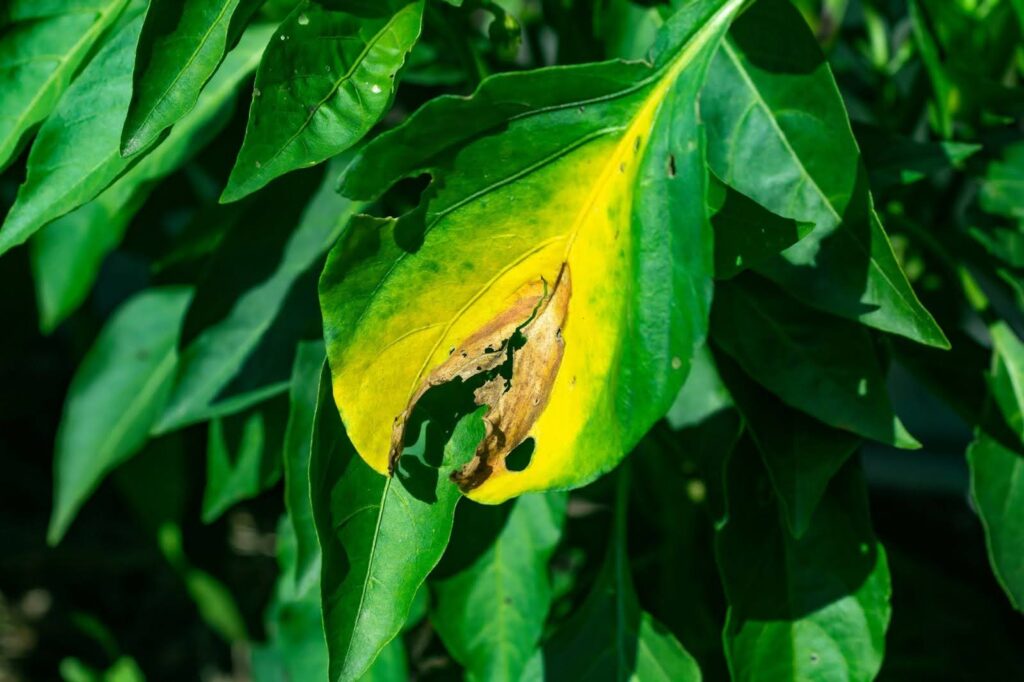
Fusarium blight
Fusarium blight is a lawn disease that typically affects cool-season grasses and is most active during hot, dry conditions combined with high humidity. The disease manifests as circular patches of dead, brown grass, starting small but potentially expanding to several feet in diameter. The grass in these patches often has a characteristic “frosted” appearance.
To combat Fusarium blight, focus on maintaining a healthy, well-aerated lawn. Ensure proper watering, but avoid over-watering, as excessive moisture promotes fungal growth. Watering deeply and infrequently in the early morning is best.
Regular aeration helps improve soil drainage and reduces compaction, which is conducive to the disease. Also, maintain balanced fertilization, avoiding excessive nitrogen in the summer, which might increase susceptibility to the blight.
If cultural practices fail to control the disease, fungicides may be necessary. Products containing thiophanate-methyl or propiconazole are generally effective against Fusarium blight. Always apply fungicides according to the label instructions, and consider consulting a lawn care professional for severe cases.
Fairy rings
Fairy rings are a common lawn issue caused by various fungi species forming circular patterns of dark green, lush grass. These rings can also include mushrooms and sometimes dead grass areas. They are most noticeable when the fungus in the soil produces a dense mat that repels water and nutrients, affecting the grass above.
Aeration is key to managing fairy rings. Aerating the affected areas helps water and nutrients penetrate the soil more effectively. Regular watering and balanced fertilization also assist in minimizing the visible difference between the affected and unaffected areas. In cases where mushrooms appear, removing them helps reduce the spread of spores, though this won’t eliminate the underlying fungus.
For severe cases, fungicide treatments may be necessary, although they often provide limited success against fairy rings. You can use products containing azoxystrobin or flutolanil, following label instructions carefully. Consistent lawn maintenance, including aeration, watering, and fertilizing, remains the most effective approach to managing fairy rings in lawns.
Red thread
Red thread is a lawn disease characterized by pink or red threads extending from the grass blade tips. It typically appears during cool, moist conditions, especially in lawns lacking in nitrogen.
To treat red thread, start by enhancing your lawn’s overall health.
Apply a nitrogen-rich fertilizer to address nutrient deficiencies. Regularly mowing at the appropriate height helps the grass outgrow the fungus. Improve air circulation and reduce moisture by aerating the soil and removing thatch. Water your lawn deeply but infrequently, preferably in the morning, to allow grass to dry during the day.
For persistent or severe cases, try applying a fungicide. Products containing azoxystrobin or propiconazole help control red thread. Always use these chemicals as directed on the label, ensuring safe and effective application.
Summit Lawn & Pest Control is here to help
Navigating the world of lawn diseases is a daunting task. Each disease, with its unique symptoms and treatment requirements, poses a different challenge to maintaining the health and beauty of your lawn.
But remember, you don’t have to face these challenges alone. At Summit Lawn & Pest Control, we specialize in diagnosing and treating a variety of lawn diseases, ensuring your lawn remains a vibrant and inviting space.
Whether you’re grappling with stubborn patches of brown patch, the unsightly rings of fairy circles, or any other lawn ailments, our team of experts is equipped with the knowledge and tools to bring your lawn back to its prime. We understand the local climate and soil conditions, allowing us to provide tailored solutions that will not only treat existing problems but also help prevent future outbreaks.
Don’t let lawn diseases diminish the beauty of your outdoor space. Contact Summit Lawn & Pest Control today and take the first step towards a healthier, more resilient lawn. With our expert care, you can enjoy a lush, disease-free lawn that’s the envy of the neighborhood.


